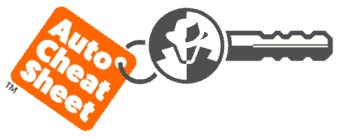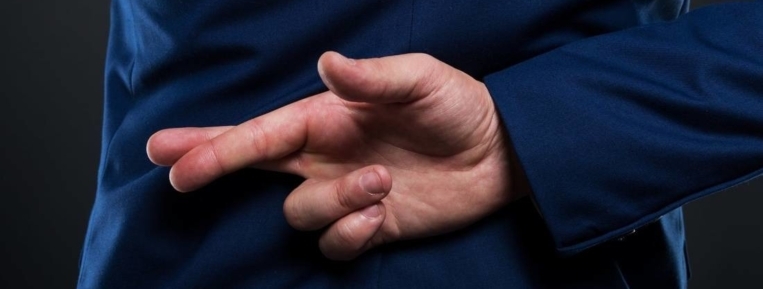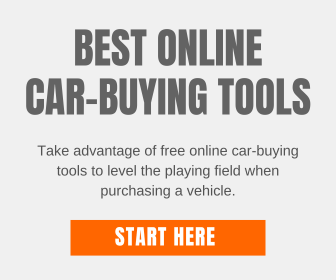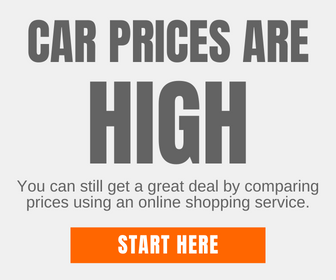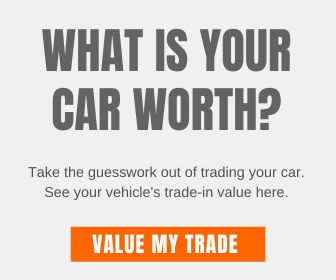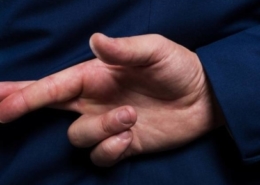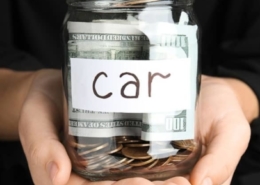Factory Invoice Price is not the Dealer’s Actual New Car Cost
Factory invoice is what a dealer paid for the car, not the vehicle’s actual dealer’s new car cost.
If you pay the factory invoice price for a new car, you may save a little bit of money but leave a whole bunch of money on the table.
Understanding the factory invoice price and the actual dealer new car cost of your desired automobile is essential to negotiating a decent deal.
You have a far more powerful and accurate negotiation stance when you know the differences between the two.
New Car Price Tip: These days, it’s hard to find a new car at a decent discount. Car buyers are frequently paying more than the suggested retail price. You can still get a great deal in your local area by comparing prices using an online shopping service such as RydeShopper or Edmunds.
Table of Contents
What is the Factory Invoice Price?
The entire cost to the dealer for a car is shown on the factory invoice. The basic invoice or price for the car’s base model is added to the cost of extras, destination fees, and manufacturer fees to arrive at this total.
However, many dealerships won’t inform you that this value disregards any factory incentives the manufacturer could provide to boost sales.
What is Dealer Cost?
Dealer cost is also known as the car dealer invoice price and is a significant number to help you calculate a fair profit new car offer.
It refers to the total amount the manufacturer invoices the dealer for the vehicles they buy, including any extras fitted that appear on the dealer invoice. Rebates, incentives, and dealer holdback (if available) on the new car are subtracted from the dealer cost of the vehicle.
This is the dealer cost that all dealerships pay the manufacturer for a car, excluding any additional dealer-specific expenses.
Since this is essentially the dealer’s expense, the consumer is typically not informed of it.
Factory Invoice Price Vs. New Car Dealer Cost
Many car buyers believe a new car’s factory invoice is the bottom line for a dealer to sell a new vehicle; this is false!
Car dealers want you to believe this myth, but the truth is that hundreds of cars are sold well below a new car’s invoice price every day.
If you want to see for yourself, pick any car you’re interested in buying and follow the steps in my article on how to get car dealers to compete online for your business.
If you haven’t done your homework, you will be disadvantaged when negotiating a new car’s price with a dealership. The dealer knows the cost of the vehicle, and you don’t.
Knowing what the dealer paid for it will put you on a level playing field when buying a new car, truck, or SUV.
Car dealers and their salesmen love it when someone walks into a dealership with their chest all bowed up and shouts, “I’ll buy that car for $300 over factory invoice and not a dime more, or I’m walking!”
When you walk through the door and make a statement like the one above, you’re unintentionally letting everyone in the dealership know you don’t see what you’re doing. You’re most likely a weak negotiator. Salespeople will be killing each other to be the ones to sell you a car.
Don’t get me wrong; paying the factory invoice price for a new car is much better than spending the total sticker price for the vehicle.
However, if you pay the invoice for your next new car, truck, or SUV, you may still be giving away much of your hard-earned money.
Several other discounts may be available to you but not offered since you stated you wanted to pay $300 over the dealer invoice. No dealership member will volunteer this priceless information to help save you money.
Dealers teach their salespeople, “It’s them or us,” the customer saves money, or the dealership makes more money from the customer unaware of discounts.
Further tips and advice:
- In my career, I’ve seen factory-to-dealer incentives on some brands as high as $8,000.00 or more to help dealers move old and new car inventory to get newer models on the lot. If you are interested in a car with a rebate or incentive attached to it like that, you may get a considerable discount when buying your next new car.
- Some dealers use significant factory-to-dealer incentives to help cover people with large amounts of negative equity (owe more than the vehicle’s worth) in their current car.
Recommended New Car Shopping Sites
 Ryde Shopper has one of the largest dealer networks in the nation. Just choose the make and model you want, and they'll quickly find the best local clearance prices for you. To get the most discounts and savings, make sure to select several dealers to compare.
Ryde Shopper has one of the largest dealer networks in the nation. Just choose the make and model you want, and they'll quickly find the best local clearance prices for you. To get the most discounts and savings, make sure to select several dealers to compare.
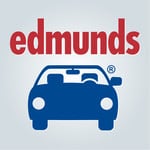 Edmunds is one of the internet's most seasoned and premier destinations for new car research and reviews. With their extensive network of dealers, you can browse, research, and juxtapose millions of new vehicles, ensuring you discover the precise car you aim to purchase.
Edmunds is one of the internet's most seasoned and premier destinations for new car research and reviews. With their extensive network of dealers, you can browse, research, and juxtapose millions of new vehicles, ensuring you discover the precise car you aim to purchase.
 MotorTrend remains an underrated gem online. While it's primarily recognized for its car magazine, its recommendation service comes at no cost and with no buying commitment. Simply choose your desired vehicle, opt for local dealers, and get access to discounted rates.
MotorTrend remains an underrated gem online. While it's primarily recognized for its car magazine, its recommendation service comes at no cost and with no buying commitment. Simply choose your desired vehicle, opt for local dealers, and get access to discounted rates.
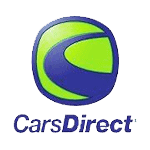 Cars Direct has been a leader in online vehicle research since 1998 and is equipped with the perfect tools to help you identify your next car, truck, or SUV. They ensure a smooth journey from customizing your preferred vehicle to finalizing the purchase, allowing you to find your next ride quickly and effortlessly.
Cars Direct has been a leader in online vehicle research since 1998 and is equipped with the perfect tools to help you identify your next car, truck, or SUV. They ensure a smooth journey from customizing your preferred vehicle to finalizing the purchase, allowing you to find your next ride quickly and effortlessly.
How Discounts Affect the Actual Dealer’s New Car Cost
Some new vehicles have secret programs available to discount the price of the car further. Some of these discounts can come in the form of:
- Customer Rebates
- Factory to Dealer Incentives
- Dealer Holdback
- Cash Back
- Special Programs
If you’re unaware that the vehicle you’re looking for has one of these discounts, the dealer will most likely not offer it upfront. If the dealer doesn’t tell you about the additional money, they can make more on the car deal.
Some dealers will negotiate the amount with you if you inquire about one. (Dealer holdback is NOT a discount or rebate; it is additional money. Many car dealers will negotiate the amount.)
It would be best to familiarize yourself with these added savings to guarantee you pay the lowest price. After researching any additional discounts available, read about new car rebates and incentives to learn more.
After figuring out your fair profit offer, you can use it as a base for your negotiations. You can also use it to compare with free online price quotes sent to you by dealers to ensure you’re not paying too much for your next new vehicle.
Real-Time Bargain Hunting: Turn to Edmunds for instant access to the latest and greatest local deals, saving you time, money, and stress.
Are Hidden New Car Incentives Available?
One of the most elusive discounts is the factory-to-dealer incentive. These incentives can affect a dealer’s actual cost of a new car.
A factory-to-dealer incentive is an extra amount the manufacturer will pay the car dealer to help the dealer move new cars and trucks to clear the way for the latest models.
Incentives may be different for specific makes, models, or trim lines. The manufacturer will not give the dealer a stimulus until the dealership proves the vehicle has sold.
These types of incentives are generally not advertised to the public. Most of the time, even the car salespeople at the dealership don’t know which vehicles qualify for them. You must research to determine if the car you want to buy has a factory-to-dealer incentive.
It’s up to each car dealership if they want to share the factory-to-dealer incentive with you. Each dealer is different; some may give up all, some, or none. It depends on how aggressive the dealer is at pricing the car.
Factory-to-dealer incentives are one of the most common discounts overlooked by car buyers. To look up this information, I recommend visiting the manufacturer’s website of the vehicle you’re interested in buying. Or, to make it easier, use an online referral service such as RydeShopper or Edmunds.
When obtaining information from one of these providers, rebates or incentives (if available) will already be included in the quoted price.
Important New Car Price Terms
The following are some new car price terms you should be aware of when buying a new car:
MSRP
Manufacturer’s Suggested Retail Price (MSRP)
The manufacturer’s recommended retail price is also called the vehicle MSRP. It’s the suggested sale price that a vehicle maker offers to dealers. The MSRP is, of course, just the starting point for negotiations at the dealership. When it comes to bargaining, many people ignore MSRP entirely.
The MSRP, the sticker price, is typically listed on the spec sheet with a new vehicle. In some instances, it isn’t even mentioned during the negotiation process. When cars are in high demand, dealers will also omit the MSRP.
The dealer will be willing to launch negotiations at a higher price if the MSRP is not advertised. It’s worth noting that the MSRP does not represent the “out-the-door” price you can plan to pay. Registration, fines, destination costs, and other expenses are not included.
MSRPs protect customers, but they are just a minimal start when buying a car at a great price.
Dealer Invoice Price
Dealer Invoice Price / Factory Invoice Price
The dealer invoice price of a new car is listed on a factory invoice sent by the manufacturer to a dealer when the new vehicle is purchased.
Many people presume that this is the actual dealer expense of the car, but this is not always the case. Factory invoice costs have secret benefit margins, including dealer holdback and manufacturer-to-dealer discounts.
Dealer Cost
Dealer cost
Dealer cost is the amount a dealer pays for a new car from the manufacturer and can be much lower than the dealer’s invoice price.
Most dealers will lead you to believe that dealer invoice is their rock bottom price. However, this is false information; dealer cost is the bottom line.
To find the actual dealer cost of a new car. Take the invoice price, subtract dealer holdback, and any customer cash rebates or incentives. This will tell you what the actual dealer cost of the vehicle is.
I go into much more detail and even provide examples of how to figure dealer costs further down this page.
Dealer Holdback
Dealer Holdback
The dealer holdback is a part of the dealer invoice or MSRP that the dealership charges back to the manufacturer. Manufacturers typically return the percentage of money withheld every quarter, which can vary depending on the agreement.
New car dealer holdback became common just a few years ago. They are used to inflate invoice rates to increase distributor earnings. This is done mainly by decreasing the gross profit margin on the sale of a vehicle. As a result, the salesperson does not receive a commission or a percentage of the dealer’s holdback amount.
Another explanation for the popularity of dealer holdbacks, typically two to three percent of MSRP, is that they encourage dealers to make exclusive offers while still making a profit. Dealers will legally advertise cars at invoice prices before recouping hundreds of dollars later.
Although it’s helpful to be aware of dealer holdbacks, you’re unlikely to be able to use them in your negotiations. It’s nice to be conscious of them. However, dealers cling to them. You may indirectly use them to negotiate a lower price.
Dealer Incentive
Dealer Incentives
Dealer incentives are also known as factory-to-dealer incentives. They lower the overall dealer’s actual cost of purchasing a new car. Those benefits may ( or may not ) be passed to customers in some situations.
Dealer offers are generally sold geographically to boost sales of a particular make, model, or trim. Manufacturers also use special sales incentives to encourage dealers to meet a specific revenue goal.
Dealer incentives are not required to be passed on to customers by dealers. If you can find specific facts about a new dealer incentive that isn’t advertised to the public, you may be able to leverage it to get a lower price.
However, because these incentives frequently vary by region, finding them successfully is not always easy. It never hurts to dig to see if you can find the information.
Destination Fee
Destination Fees
Automotive manufacturing plants must move new cars to dealer lots. The manufacturer charges the dealer for the cost, which is then passed on to the customer.
Typically, the overall sum is in the hundreds of dollars. As good as it would be to negotiate these payments down, it just isn’t feasible. The number varies based on the type and manufacturer, but it has little to do with how much the car has to be shipped.
Manufacturer Incentives and Rebate
Manufacturer Incentives and Rebates
The most common manufacturer rebates and incentives are intended for customers to benefit from. To promote purchases, cash rebates, low-interest financing, and special lease rates are all available from time to time.
These incentives are marketed as first-time buyer programs, low-interest special events, employee plans, military discounts, and other bonuses.
These benefits lower the vehicle’s net price. Although it rarely happens that you will have incentives that run in conjunction, you usually have to choose between a rebate or a financial incentive.
You can use an online calculator to help you choose whether a cash-back rebate or a low-interest incentive is the best fit.
Regional Ad Fee
Regional Ad Fees
Regional ad rates are not negotiable in the vast majority of cases. This is because they are typically itemized on dealer invoices and are a fixed aspect of a dealer’s cost. They are a method for suppliers to recoup any costs associated with advertising and selling individual models.
When you see this fee on a distributor invoice, you can bet the amount will be on your sales contract.
However, the factory invoice does not contain these fees in some circumstances. If it does not, however, they are listed in your sales contract, you might have some wiggle room. It all depends on how flexible the particular dealer is and the price you are paying.
Before you go to the dealership, search online for a list of regional advertisement fees by the manufacturer. This will give you a better idea of how much these fees would cost when buying a new vehicle.
How to Figure a Dealer’s True New Car Cost
Information needed to calculate a dealer’s actual new car cost:
- Factory Invoice Price of vehicle – Find it on Edmunds.
- Dealer Holdback – Figure the amount with my new car dealer holdback chart.
- Rebates & Incentives – Check the manufacturer’s website for a rebate or incentive on the vehicle you are interested in.
You can find the factory invoice price at Edmunds; pick out the car you want once you get the vehicle’s page. Scroll to the “Build and Price button.”
Sometimes, they put vehicles up before they receive the invoice price information, and sometimes, they will sell the button to an advertiser, so you have to build the car on their page. Don’t fret; you may have to come back later.
Here is a picture that shows how to locate the information.
Once you have the above information on the vehicle you want to buy. Figuring the true cost of any new car is a simple formula:
Invoice Price – Factory Holdback – Factory to Dealer Incentives = Dealers Net Cost
| Figure New Car Cost Example #1 | ||
|---|---|---|
| $24,839.00 | = | New car sticker price |
| $22,239.00 | = | Factory invoice price |
| $496.78 | - | Subtract dealer holdback (2% of MSRP *amount varies) |
| $1,000.00 | - | Subtract dealer incentive ($1,000 factory to dealer incentive) |
| $20,742.22 | = | Dealer's true net new car cost |
As you can see from the example above, the dealer’s actual cost of the car is $20,742.22, which is much less than the factory invoice price of $22,239.00. It’s $1,496.78 lower than the dealer’s invoice price, to be exact.
If you can buy the car for the dealer’s new car cost, you would save $4,096.78 off the sticker. This translates to a $113.80 monthly savings on a 36-month car loan with no interest.
If you bought the vehicle in the above example at $300 over the invoice, you would save $2,300 off the sticker price and be happy because you genuinely believe you received a good deal. The dealer will also be pleased because they will still make a $1,796.78 profit from that deal.
To put the dealer’s profit into perspective, you would add $49.91 to your monthly payment on a 36-month loan at 0% interest. Is this considered excessive profit for a car dealer? That’s for you to decide.
Regarding factory-to-dealer incentives, the dealer is entitled to the money. You may not be able to get the whole amount when it comes to these types of incentives, if any. Even if you only get half of it, you still save money. Each dealer is different; if the first one doesn’t negotiate, try a different one.
Buying a New Car Below Factory Invoice Price
This time, you get lucky and negotiate a deal to buy the car for $300 UNDER the factory invoice price. You save $2,604 off the list price and are super excited, referring everyone you know to the great deals from the dealership.
However, since you didn’t ask, the dealer didn’t tell you about the secret incentive available on the car. He made an additional $2,346.91 profit from selling you the vehicle. Look at example #2 below, and I’ll show you how he did it.
The $2,346.91 you could have saved translates to $65.19 monthly for 36 months at 0% interest added to your car payment. And you gave the dealer some excellent free word-of-mouth advertising, telling your friends and family how great the dealership treated you.
Always research and ask the dealer point blank if there are any factory-to-dealer incentives on the vehicle you want.
Buying a Car With a Rebate and Dealer Incentive
Now, let’s take this one step further. There may also be a CUSTOMER REBATE or CASH BACK attached to the vehicle you’re looking at, along with a hidden factory-to-dealer incentive.
Most people use the rebate or cashback to lower the price of the car so they can receive an even deeper discount from the list price.
| Factory Incentive & Customer Rebate #2 | ||
|---|---|---|
| $29,897.00 | = | Sticker price of new car |
| $27,593.00 | = | Factory invoice price |
| $869.91 | - | Subtract dealer holdback (3% of MSRP *amount varies) |
| $1,500.00 | - | Subtract customer rebate |
| $1,750.00 | - | Subtract dealer incentive ($1,750 factory to dealer incentive) |
| $23,446.09 | = | Dealer's true net new car cost |
Walking into a car dealership and buying the above car at the factory invoice for $27,593 will save you $2,304 but will cost you $4,146.91.
Not doing your homework first can prevent you from substantial savings when buying your next new car or truck.
How to Find Hidden Dealer Money Online
Dealers do not usually advertise factory-to-dealer incentives to the public, making it hard for consumers to determine if one is available. They will share customer rebates and cash because they’re publicly advertised and a way to draw traffic to the dealership.
When you see a meager price on a new car, look in the fine print and see if the dealer used the incentive to get to the advertised price. Doing this will let you know if there is an incentive on that specific make or model vehicle.
You can also visit Edmunds to determine if a vehicle has a rebate and incentive. The information found on the site is up-to-date and very accurate.
Remember that the factory invoice is not the dealer’s new car cost. When buying your next new car, truck, minivan, or SUV, some time and researching will save you hundreds, if not thousands, of dollars.
